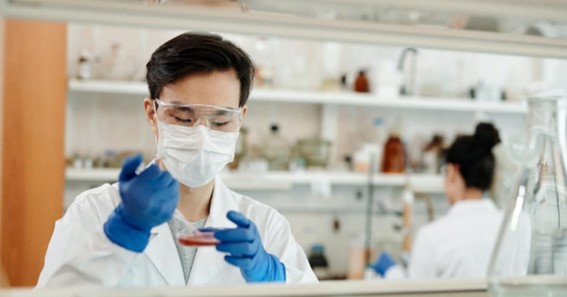Through the design and development of complex computer systems, medical equipment, and software, bioengineers and biomedical engineers have helped improve the lives of millions around the globe. They work alongside doctors, medical practitioners, and scientists to provide solutions to complex medical problems. They develop equipment that helps in detecting infectious diseases, utilize their expertise to create new drug therapies, and design software for complex medical instruments.
Breakthrough innovations such as MRI machines, dialysis machines, tissue engineering, prosthetic limbs, and biomedical electronics are also the efforts of bioengineers and biomedical engineers. While both bioengineers and biomedical engineers sound the same, there are some notable differences in what they do.
Before we move forward to common health concerns addressed by them, it is essential to understand the differences between the two.
What Is the Difference Between Bioengineers and Biomedical Engineers?
Although both bioengineers and biomedical engineers combine engineering principles with biology and healthcare, there are slight differences between them. Bioengineers generally work on designing software to run complex medical software, understanding the signals by the brain and heart, and developing new drug therapies for infectious diseases and cancer.
Biomedical engineers are involved in the production of new medical equipment and devices. They can also design software for complicated medical equipment, test new drug therapies using computer simulations, and develop artificial body parts. However, despite their differences, they both work for the betterment of the lives and health of others.
Bioengineering vs. Biomedical Engineering – which is Better?
If you’re interested in pursuing bioengineering or biomedical engineering, you might wonder which is better. Both bioengineers and biomedical engineers work in similar industries.
Bioengineers can work in healthcare, agriculture, and pharmaceuticals, while biomedical engineers can work in the research and development of medical devices. The debate on bioengineers vs biomedical engineers is long going, but there is no clear winner. Both fields have a multitude of career opportunities and address common health concerns.
5 Common Health Concerns That Bioengineers And Biomedical Engineers Address
Common health concerns addressed by bioengineers and biomedical engineers include the following:
- Artificial and Bionic Prosthesis
Bioengineers and biomedical engineers are involved in solving some of the most complex issues related to healthcare, including artificial and bionic prostheses.
In medicinal terms, a prosthesis is a synthetic device that replaces lost bodily parts like a knee, leg, hand, or foot. Both bioengineers and biomedical engineers play different roles in the development of prosthetics. Bioengineers are involved in research to improve artificial limbs, while biomedical engineers are involved in prosthetics manufacturing.
Thanks to the continued efforts of both bioengineers and biomedical engineers, it is now possible to connect the human mind to an artificial limb called bionic prosthetics. This technology helps regain some lost functions in your missing body part.
- Tissue Engineering
Tissue engineering is yet another breakthrough innovation by bioengineers and biomedical engineers that could improve people’s lives. Tissue engineering is a field that integrates biology and engineering to create artificial tissues or organs. Although still in its research stages, tissue engineering holds the future of medical practice. Tissue engineering can help in dealing with severe burns and organ transplants. It can help patients suffering from diseased or failing body organs, such as kidneys, liver, eyes, lungs, etc. Through the continued efforts of bioengineers and biomedical engineers, liver, cartilage, skin, and muscle tissues have been successfully engineered till now, although their use on human patients is still rare.
- Developing and Testing New Drug Therapy
Bioengineers and biomedical engineers also work together to develop medicines and drugs to treat chronic diseases, such as cancer. Bioengineers, using their knowledge of biology and chemistry, work on developing new drug therapies for treating diseases, while biomedical engineers use computer simulations to test these new drug therapies. Drug delivery is another important field where bioengineers and biomedical engineers work together and make life easier for many.
- Biomedical Electronics
Biomedical electronics are electronic equipment that helps doctors and medical practitioners detect diseases or abnormalities in a patient’s body. Devices such as MRI machines, dialysis machines, intensive care unit monitoring systems, and surgical lasers are all part of biomedical electronics. Bioengineers and biomedical engineers can work in the research, design, and development of these devices, along with the maintenance and repair of these devices. They can also work with the manufacturing teams to ensure the safety and effectiveness of these biomedical electronics.
- Biological processes
Biomechanics is a field that studies the movements of the human body to understand how and why it responds and how the biological processes work. It is the field that has helped a lot in sports and athletics. Athletes hire bioengineers and biomedical engineers to help them improve their body movements. They also help in devising strategies to reduce the risk of injury. With the advancements in technology and the efforts of bioengineers and biomedical engineers, pacemakers and wearable sensors have been produced that have improved people’s lives.
Conclusion
As the modern world experiences many complex medical problems, bioengineers and biomedical engineers work to solve those problems and ease the work of doctors and medical practitioners around the globe. The development of biomedical electronics, artificial and bionic prosthetics, tissue engineering, understanding biological processes, and developing new drug therapies are some of the common health concerns bioengineers and biomedical engineers work to address. The above-given blog highlights some features that make biomedical engineers and bioengineers similar in practice, despite their differences in theory.







